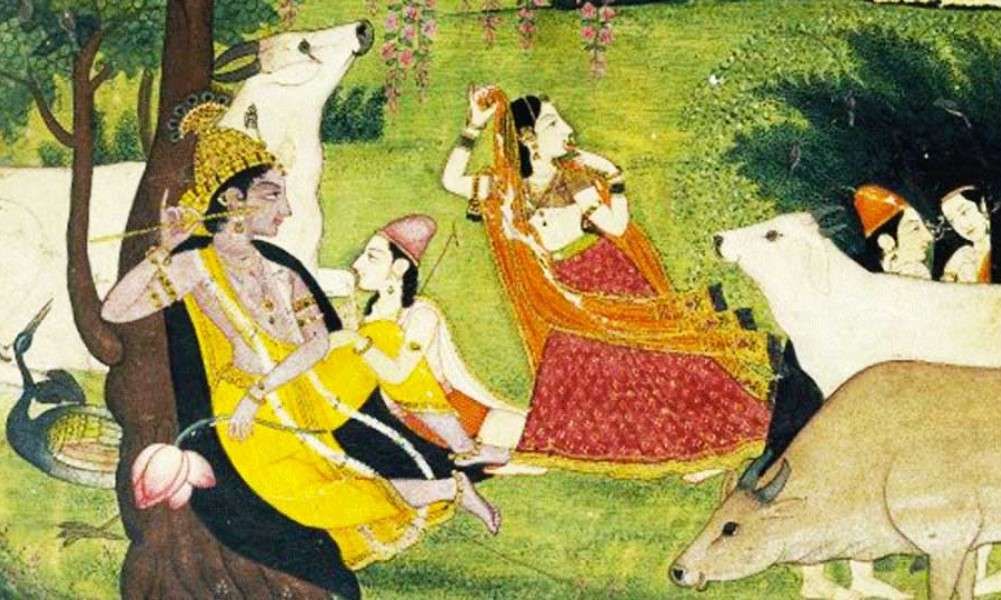Gopala: Understanding the Essence of Krishna as a Cowherd
Sadhguru looks at the meaning of the Gopala chant, and explores various facets of Krishna - his beauty, his fearlessness, and how he played with the juice of life.

Sadhguru looks at the meaning of the Gopala chant, and explores various facets of Krishna - his beauty, his fearlessness, and how he played with the juice of life.
Gopala Gopala Gopi Vallabha Gopala
Govinda Govinda Rasa Leela Govinda
Gopala Gopala Gopi Vallabha Gopala
Govinda Govinda Yadu Kula Shura Govinda
Gopala Gopala Gopi Vallabha Gopala
Govinda Govinda Murali Lola Govinda
Gopala Gopala Gopi Vallabha Gopala
Govinda Govinda Radhe Mohana Govinda
Subscribe
Gopala Gopala Gopi Vallabha Gopala
Govinda Govinda Shyama Sundara Govinda
Sadhguru: What is Gopala? What does it mean? Go means “cow.” Pala means “one who tends to it.” Krishna is seen as a cowherd. Generally, divinity has always been recognized in great ascetic yogis, or sometimes in the form of kings – but a cowherd... Socially, he is at the bottom rung. That is why Gopala. He is just a cowherd – but you cannot ignore him. His beauty, his wisdom, his strength, his valor could not be ignored, from day one. Even as a little baby, they could not ignore who he was. Many people tried to dismiss him. “He’s just a cowherd.” But that itself became a celebration for everyone else. “He’s a cowherd!” When we refer to him as Gopala, we are talking to him in an endearing way. When we call him Govinda, we are bowing down to him as the Divine. This moment he is God, the next moment he is a child, the next moment he is just a man – he is so many things at the same time.
Leela means play. The profound dimensions of life, the ultimate nature of the existence can be delivered in a playful way. We can say Rasa is the juice of life. There may not be an exact word to translate this into English. So with Rasa Leela Govinda, we are saying he is someone who played with the juice of life. The dance sessions that he had in these communities at certain times of the month or in the evenings after the work is done were referred to as Rasa Leela. That means “playing with the juice of life.” Slowly, this got identified as a space where there was no anger, there was no desire, just life. The juice of life flowed because there was no anger and no desire. So dance was not just dance, it took on a different dimension of transcendence.
This aspect has been brought forth in many ways. In various parts of the country, this Krishna culture developed in different ways because India has a multicultural scene. In Tamil Nadu, they sing “Aasaiyum kopamum illaa nagaram.” They are saying that is a space where there is no desire or anger. Once there is no anger and desire, man is no more a vested interest, he will be full of joy and love.
Then we are saying, “Yadu Kula Shura.” He belongs to the clan of Yadavas or Yadus. They were a dynasty of kings. Some of the dynasties of kings belonged to the Sun Dynasty, some belonged to the Lunar Dynasty. The Yadus belonged to the Lunar Dynasty. So, Yadu Kula is referring to the dynasty. Shura literally means “a brave or a valiant person.” But at the same time, it is also the name of the tribe or clan that he was born into. His father Vasudeva was a Shura. It is being used in both ways.
The next thing that we are saying is “Murali Lola,” which means “one who loves to play his flute.” Murali means “flute.” One who enchants people with his flute is Murali Lola. The next thing we are saying is “Radhe Mohana.” That means “one who loved Radhe,” or “one who mesmerized Radhe.” It is both ways – one who is mesmerized by Radhe and one who mesmerizes Radhe.
The last line is “Shyama Sundara.” Sundara means “beautiful,” Shyam means “evening.” Because of the color of his skin, Krishna was known as a dusky beauty. He was like twilight. When the sun is just setting, the light blue of the day sky goes away and a dark, almost blackish blue comes up – that was his color. So they called him Shyama Sundara.
Editor’s Note: Sadhguru explores the life and path of Krishna. Watch the Leela series, available as a free webstream – one part every week.



